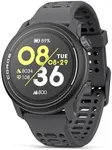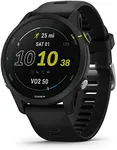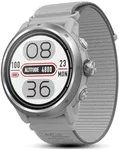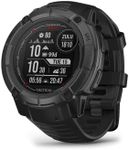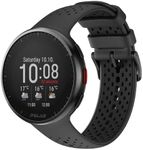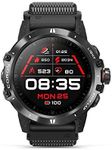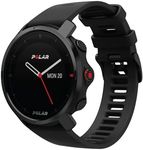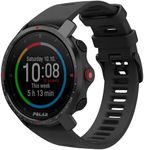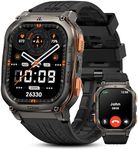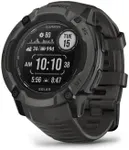Buying Guide for the Best Gps Hiking Watch
Choosing a GPS hiking watch can make your outdoor adventures safer and more enjoyable by helping you navigate, track your progress, and monitor your health. The right watch for you depends on how you plan to use it—whether for casual day hikes, multi-day treks, or challenging mountain expeditions. Understanding the key features will help you find a watch that matches your needs and ensures you get the most out of your hiking experience.GPS AccuracyGPS accuracy refers to how precisely the watch can determine your location. This is important because accurate tracking helps you stay on course and find your way back if you get lost. Some watches use only basic GPS, while others combine multiple satellite systems (like GLONASS or Galileo) for better accuracy, especially in dense forests or mountainous areas. If you mostly hike in open areas, basic GPS may be enough, but for challenging terrains, look for watches that support multiple satellite systems.
Battery LifeBattery life tells you how long the watch can operate before needing a recharge, especially when using GPS. This is crucial for longer hikes or multi-day trips where charging options are limited. Some watches last only a few hours with GPS on, while others can go for days. If you do short hikes, a shorter battery life may be fine, but for longer adventures, choose a watch with extended battery modes or solar charging features.
Durability and Water ResistanceDurability and water resistance indicate how well the watch can handle tough outdoor conditions like rain, mud, or accidental drops. A durable watch is built with strong materials and can withstand bumps and scratches, while water resistance ensures it keeps working in wet weather or if you cross streams. If you hike in rough or wet environments, prioritize higher durability and water resistance ratings.
Navigation FeaturesNavigation features include things like route tracking, breadcrumb trails, and the ability to upload maps or waypoints. These tools help you plan your hike, follow a set path, and retrace your steps if needed. Some watches offer basic navigation, while others provide detailed topographic maps and turn-by-turn directions. If you like exploring new trails or hiking off the beaten path, look for advanced navigation features.
Health and Activity TrackingHealth and activity tracking covers features like heart rate monitoring, step counting, sleep tracking, and calorie burn. These help you monitor your fitness and overall well-being during hikes. Some watches offer basic tracking, while others provide more detailed health insights. If you want to keep an eye on your fitness or have specific health goals, choose a watch with comprehensive tracking features.
Display ReadabilityDisplay readability refers to how easy it is to see the watch screen in different lighting conditions, such as bright sunlight or at night. A clear, easy-to-read display ensures you can quickly check your stats or maps without straining your eyes. If you often hike in bright or changing light, look for watches with high-contrast or transflective displays.
Comfort and FitComfort and fit are about how the watch feels on your wrist during long hikes. A comfortable watch is lightweight, has a strap that fits well, and doesn’t cause irritation. If you plan to wear the watch for extended periods, try different sizes and strap materials to find one that feels good for you.
